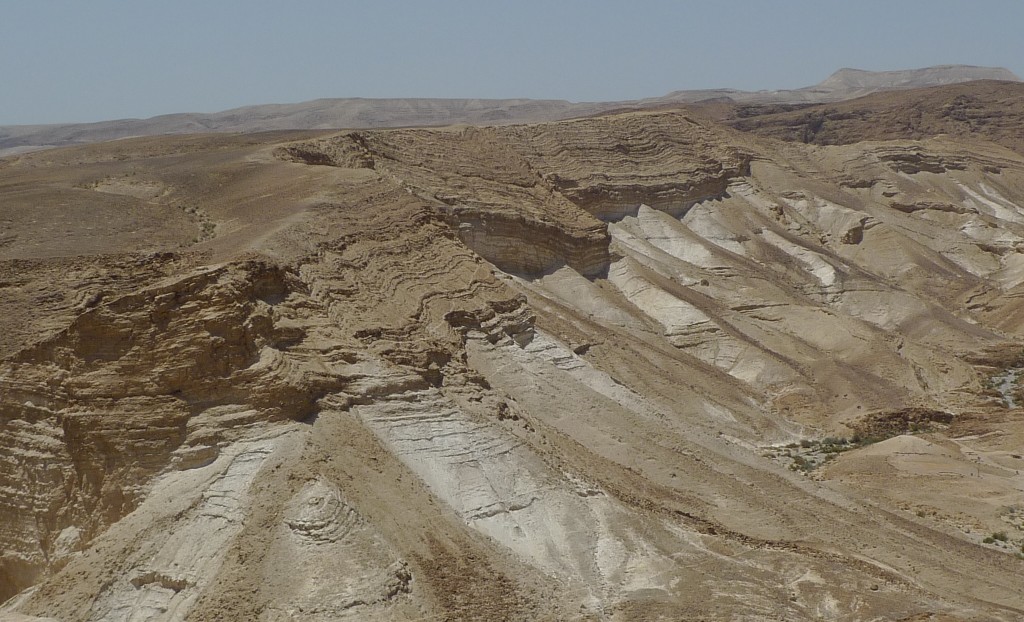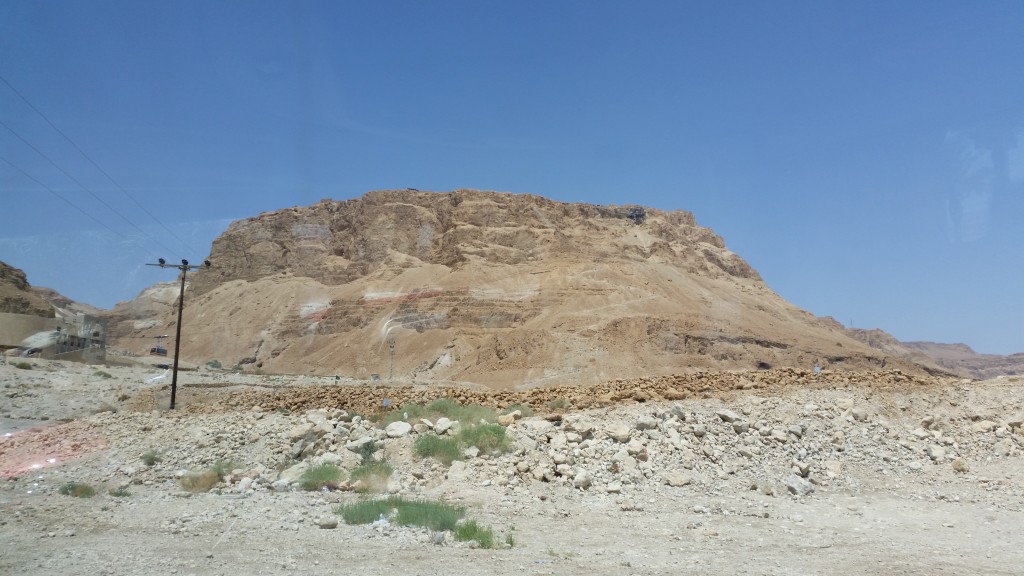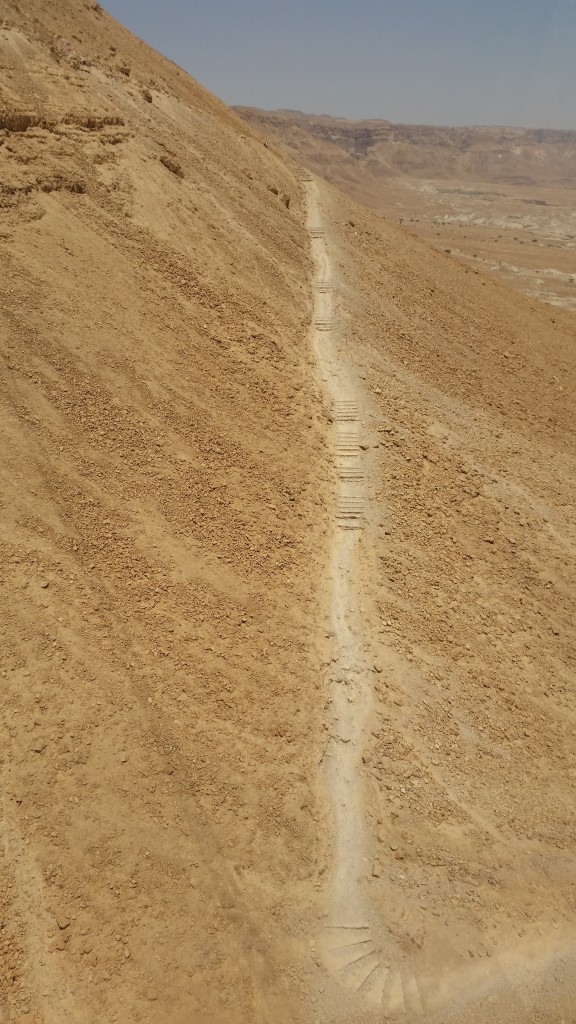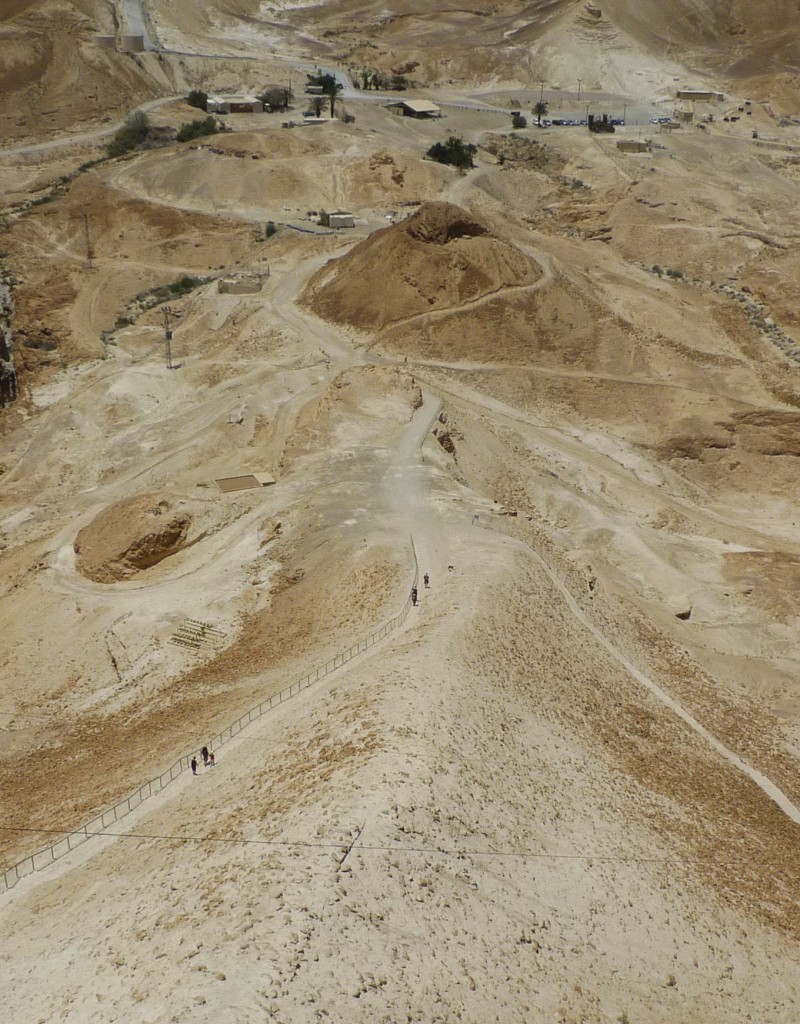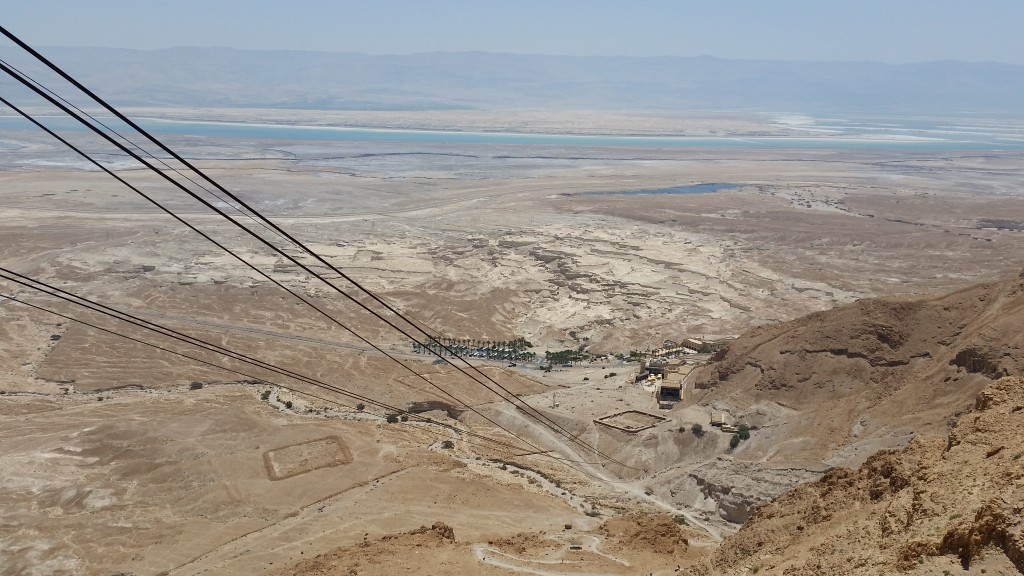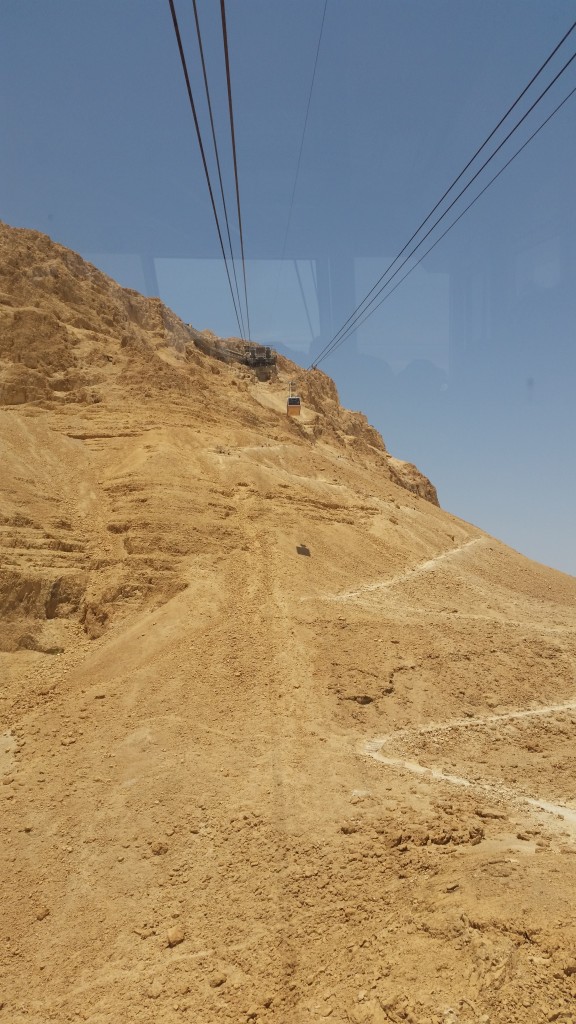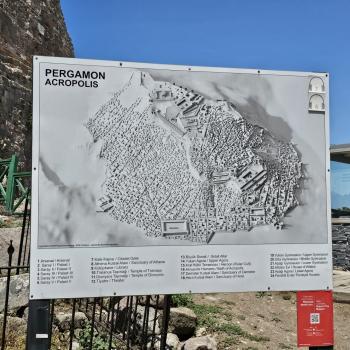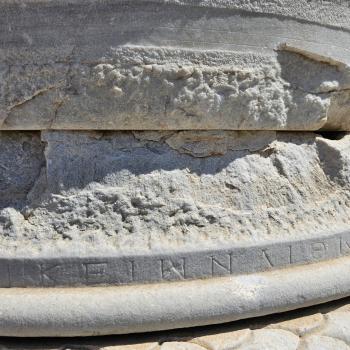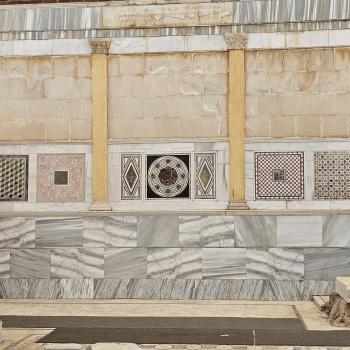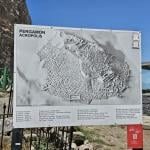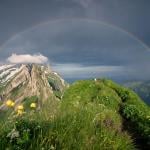The ride through the desert (not on a horse with no name please— it’s too hot) is a long one to get to Masada, especially from Galilee where we started the day. You can however see the bluff from a great distance as you ride along beside the every dwindling Salt Sea (can you say, too much mining by the Ahava cream people?).
The famous Israeli warrior turned archaeologist, Yigal Yadin was originally responsible for the dig here, and he is commemorated in the entrance building to the site…
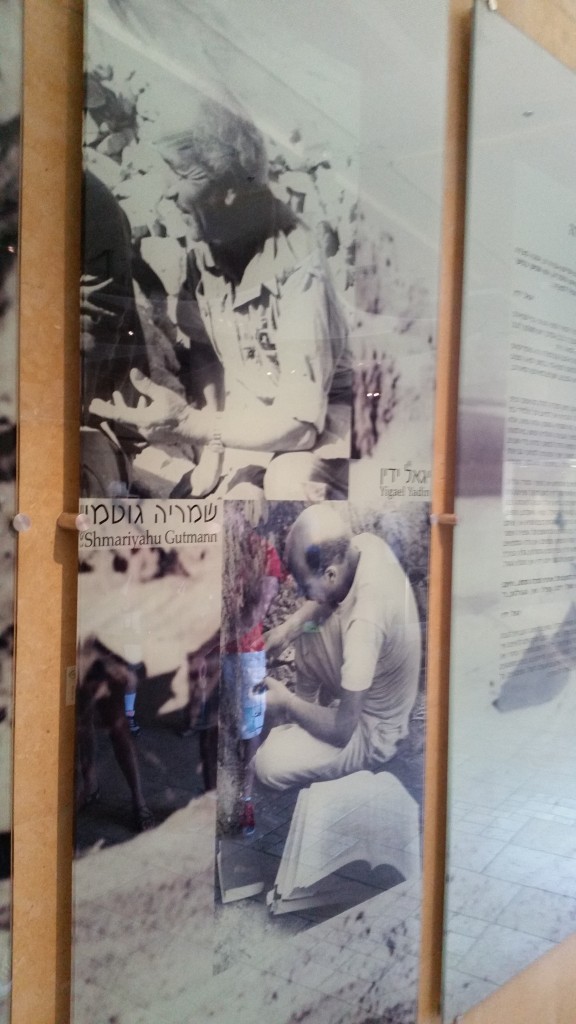
How does one get up to the top of Masada? In the old days it was just by the Serpentine path ( When I was young and foolish, I once raced my students down this path to the bottom— 17 minutes), or if you are the Roman army, led by a determined Flavius Silva, you do it by building a gigantic seige ramp. Today we just take the cable car up.
Here is a scale model of a bird’s eye view of Masada.
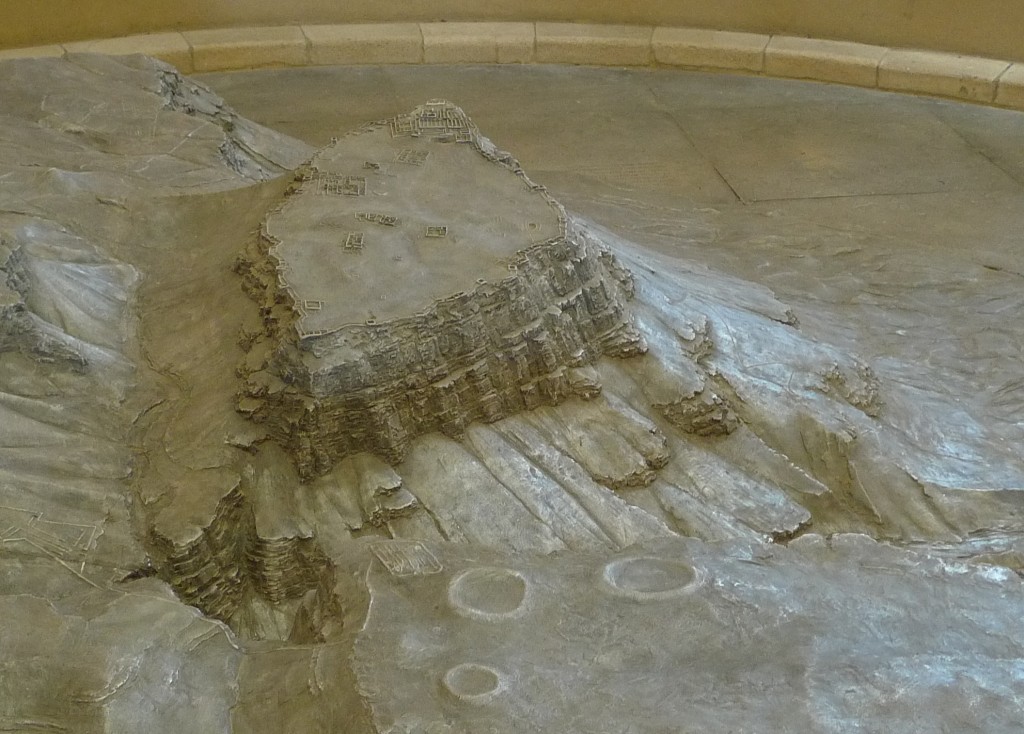
It is amazing to me that you can still see the remains of the Roman camps of Silva, the castrae, even to the point of seeing how the headquarters is walled off from the rest of the camp.
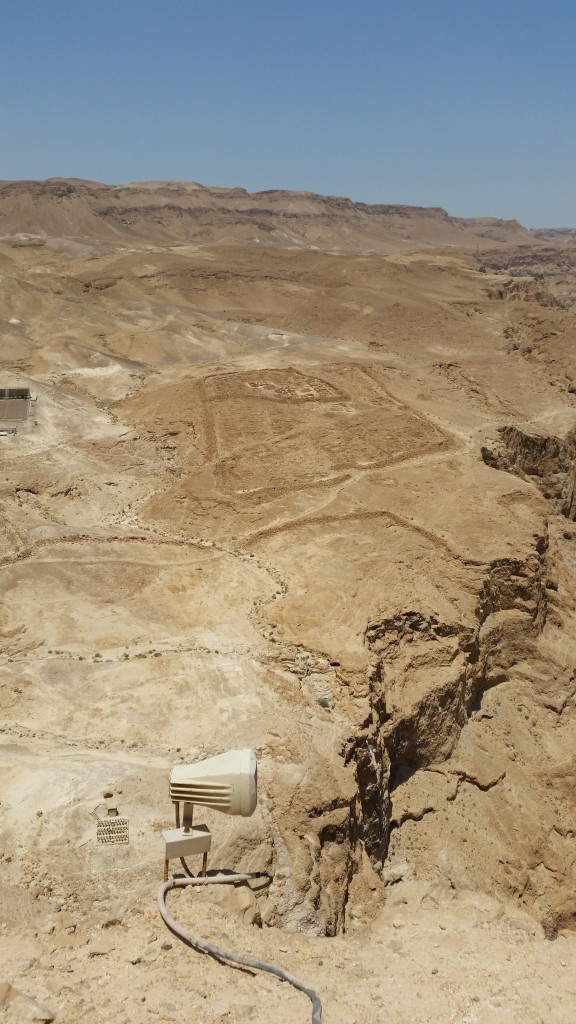
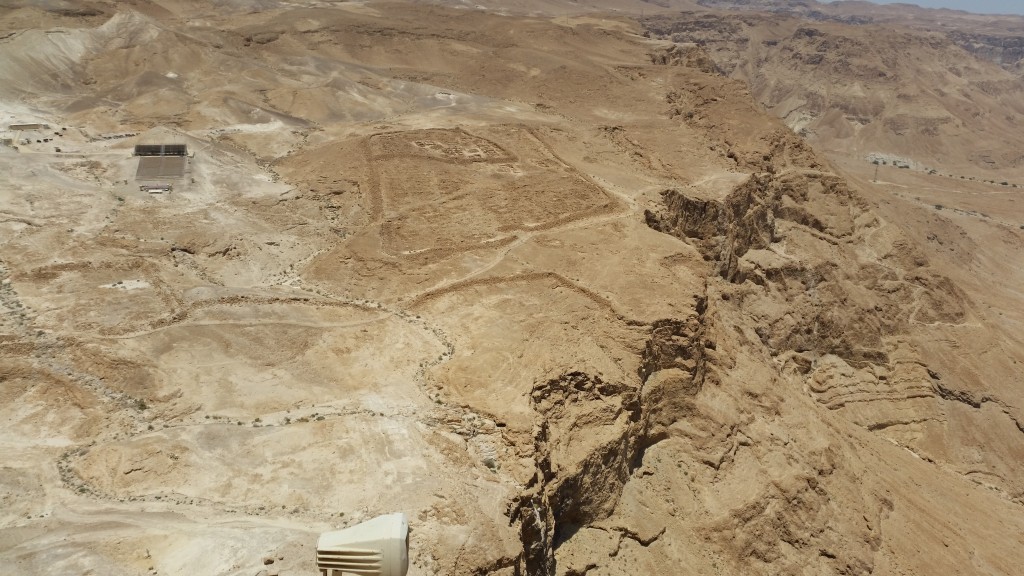
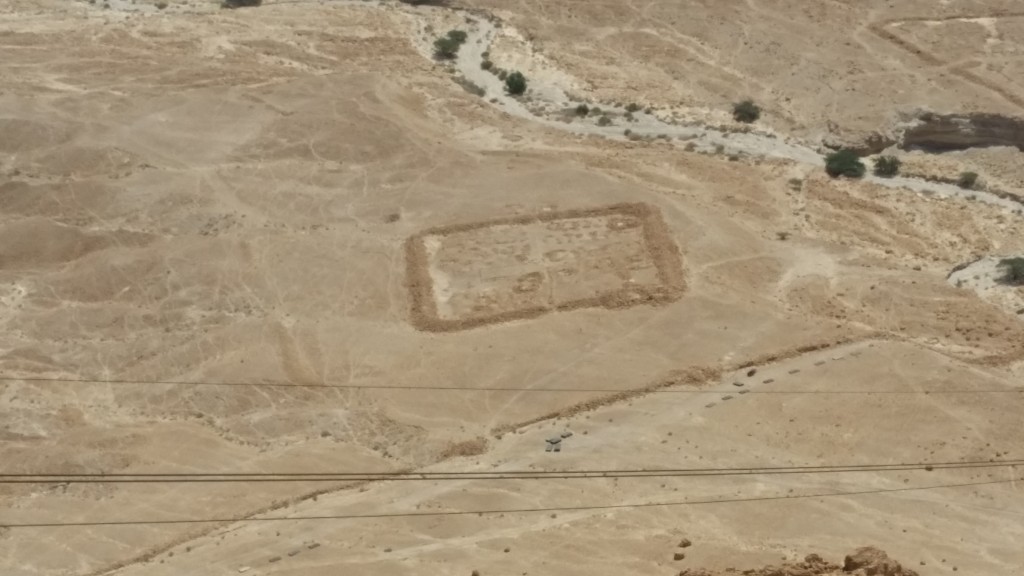
There are other things one can see from the top of Masada, not least how much the Dead Sea has shrunk in the last twenty years, alarmingly so.
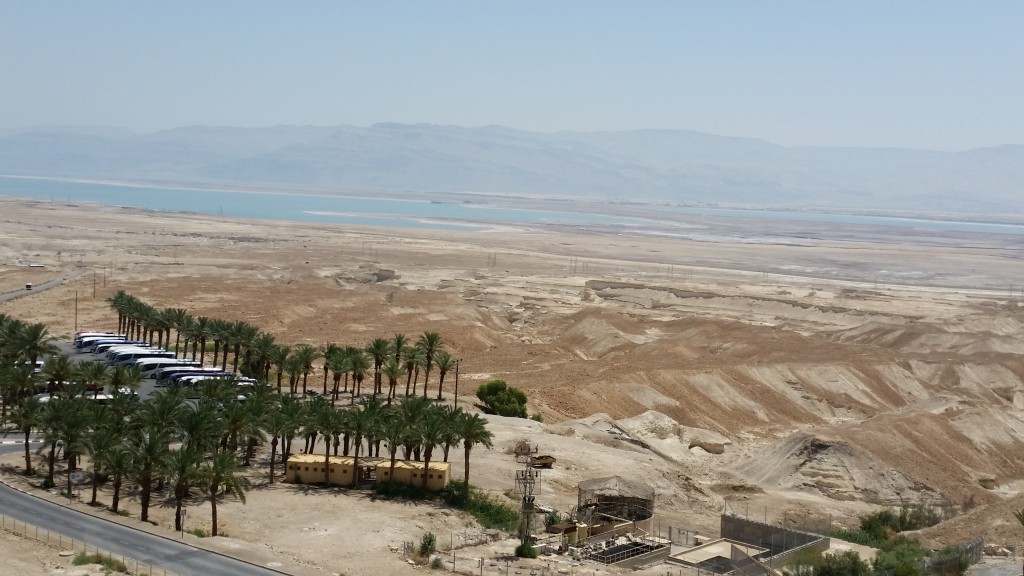
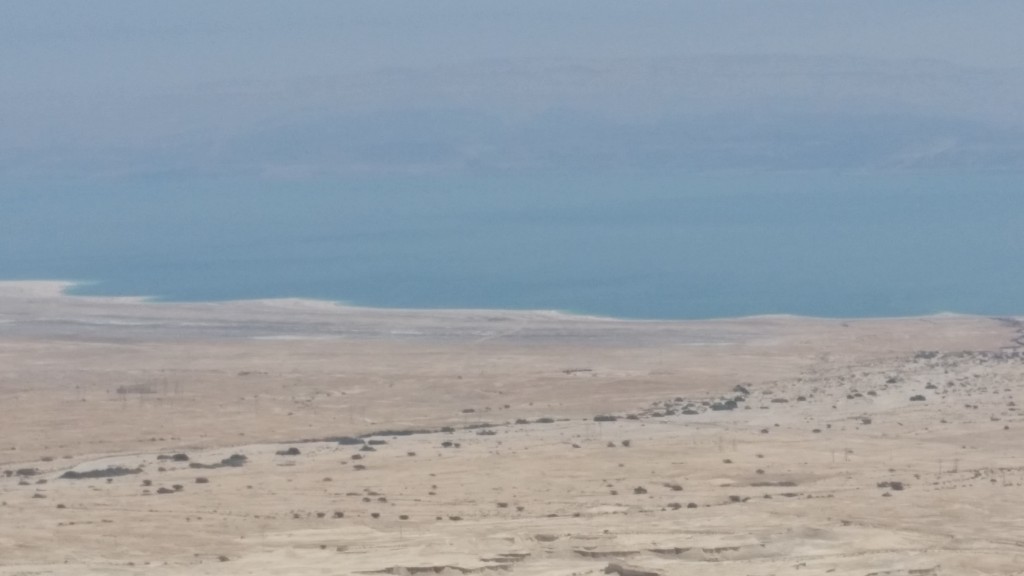
It’s no good when the salt sea becomes the salt flats.
On the top of Masada there are two palaces, though it is not clear Herod the Paranoid, I mean Herod the Great, ever actually came here once it was built. Here is a picture of the remains of the northern palace,
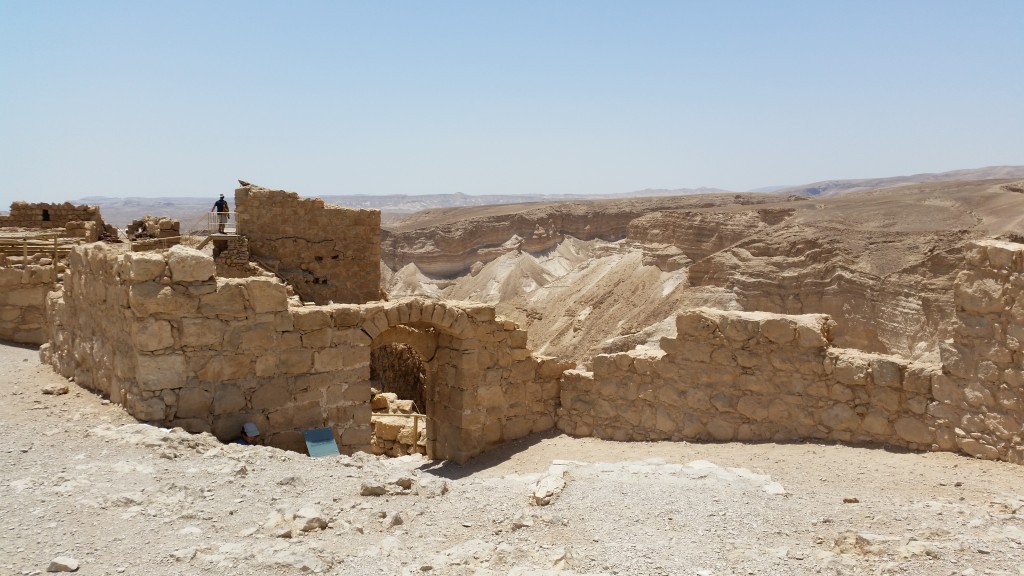
The Western palace is far more interesting with its gorgeous mosaic floors.
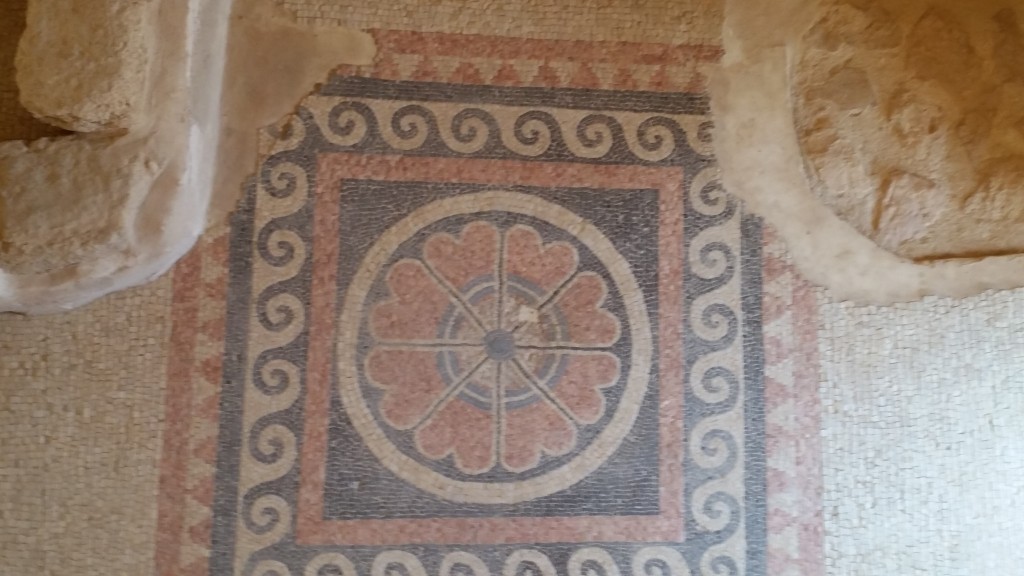
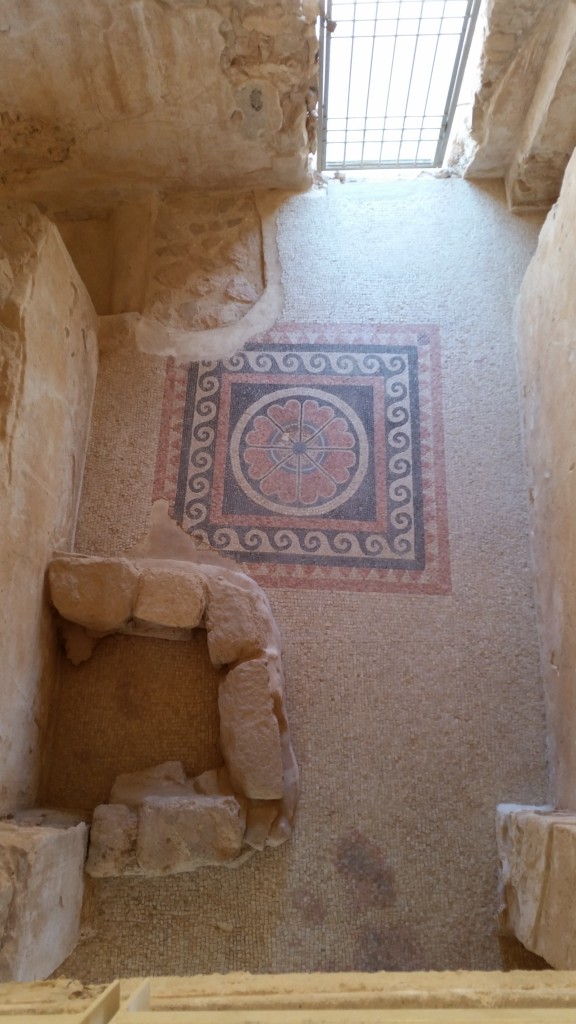
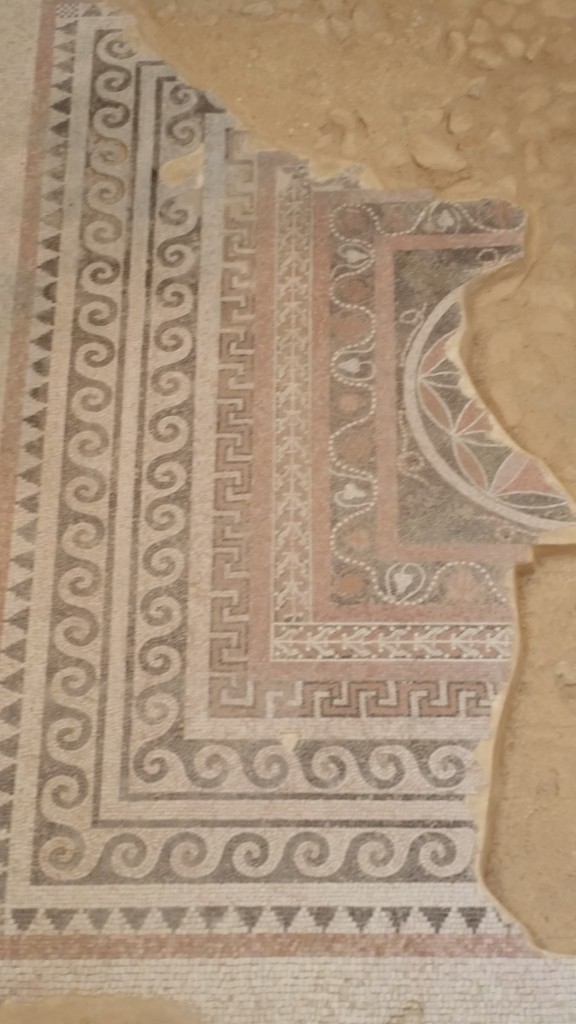
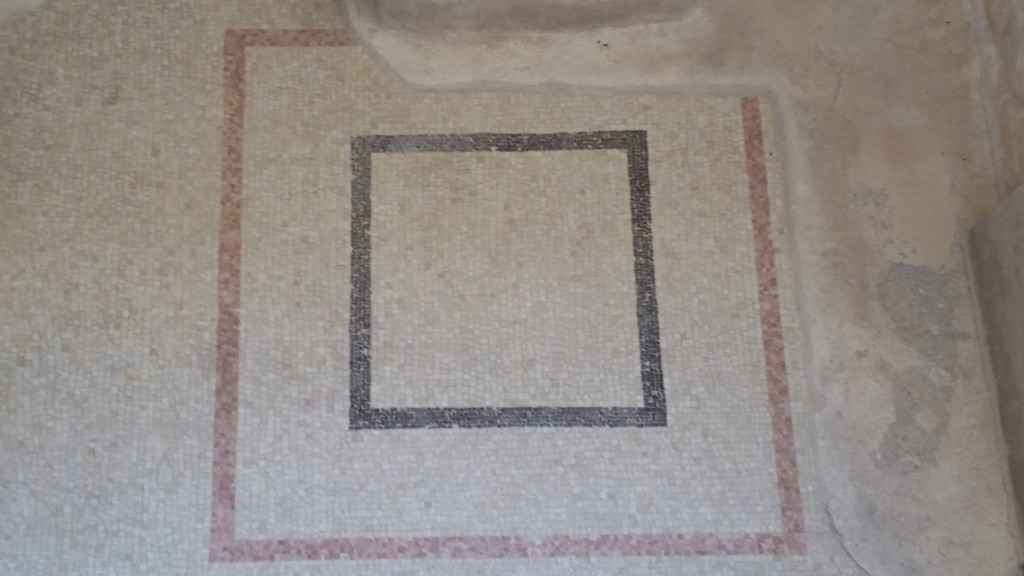
There was also a columbarium on top of Masada, no not a burial site for cremated remains, this is where they kept their passenger pigeons to send message elsewhere, something clearly used by the Zealots when they were trapped up here after the fall of the Temple in A.D. 70 (I will leave it to you to read the dramatic account of Josephus, but with this spoiler alert— Josephus was given to dramatic hyperbole, and there may not have been a massive suicide as the Roman victory became clear around A.D. 72. The movie Masada, is quite good (Peter O’Toole as Flavius Silva, Peter Strauss as the rebel leader), but also given to over-dramatics.
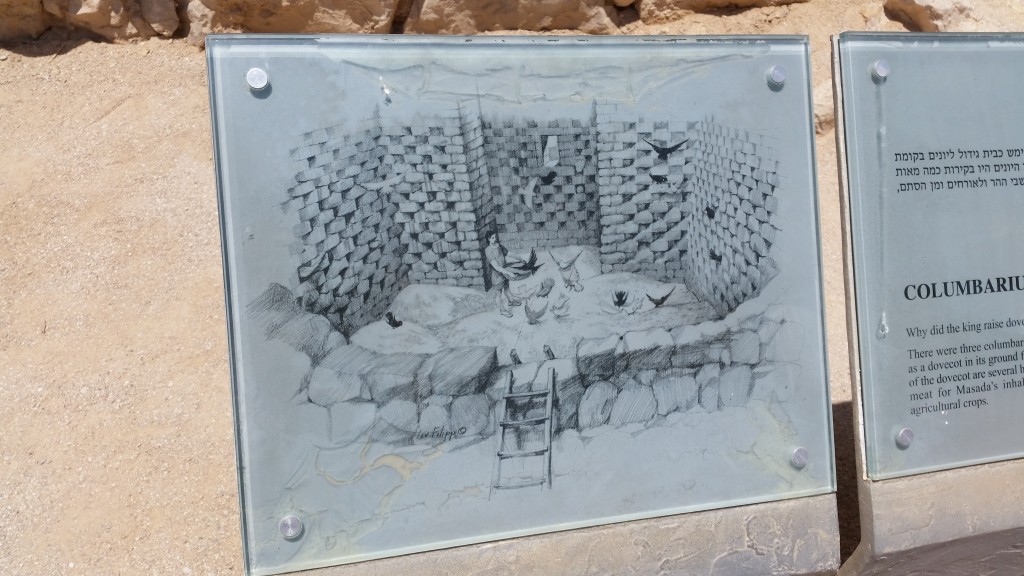
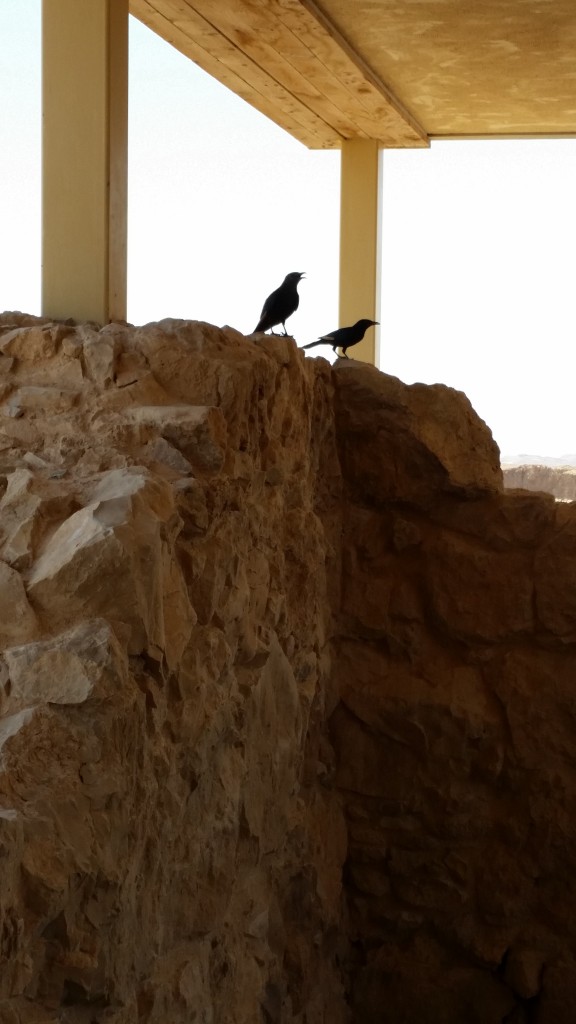
Equally alarming is all the signs of erosion from the top of Masada… the whole area is deteriorating.
